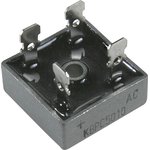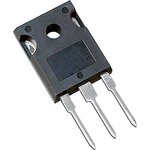Sure... for general info. Fault caused by simple turn on does not make sense if nothing has changed.Ilya said:I'll check with the scope, but I'm really not so willing to turn this thing on without any protection. Each failure is expensive and takes quite a lot of time to fix. Besides, I hate soldering 8awg wires
Will it be as informative if I check the voltage with slow start engaged?
BTW what is PIV spec on diode bridge... ? Some high current bridges are not high voltage, while that should not fail preferentially at turn on, unless they fail every time they turn on. 8)
I believe that shorted diodes are a legacy from the last failure, when 3 regs went to the better place. I think that these diodes were right there with those regs.
Still a mystery to me.
JR




































